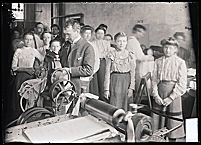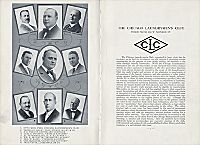| Entries |
| L |
|
Laundries and Laundering
|

|
Laundry was big business in Chicago for a number of reasons. As in other urban areas, bourgeois standards of cleanliness were rising just as urban pollution made it increasingly difficult to get clean and stay clean. Because Chicago was located at the terminus of a number of railroads. Chicago laundries handled the washing of large numbers of travelers and the hotels, trains, and boats that catered to them.

|
Before the Great Migration, Northern European immigrants filled the majority of laundry jobs. Laundry owners avoided hiring African Americans, confining these women to hand laundries and domestic service. The influx of large numbers of southern migrants in the 1910s and 1920s coincided with the widespread introduction of ironing machines which eliminated the high-paying jobs attractive to experienced workers. By 1920, perhaps 25 percent of Chicago's laundry workers were African Americans. For many of these women (and a smaller number of men), laundry work provided an important transitional step from agriculture and domestic work to factory employment.
Chicago was also a center of efforts by the American Federation of Labor and Women's Trade Union League to organize laundry workers. The female majority of workers proved difficult both to organize and to keep in unions. In 1903, the city was rocked by its first major laundry strike, which began with a walkout from the company laundry at Pullman. For the next 30 years, this strike and the many that followed achieved only minimal gains. Widespread, stable unionization was finally achieved after the passage of the Wagner Act and the spread of Congress of Industrial Organizations unions in the late 1930s.
Nationwide, the laundry industry began to go into decline in the 1930s, reeling from the effects of the Great Depression and the growing popularity of electric washing machines for the home. The industry currently survived into the twenty-first century largely in the form of linen services and shirt laundries.
The Encyclopedia of Chicago © 2004 The Newberry Library. All Rights Reserved. Portions are copyrighted by other institutions and individuals. Additional information on copyright and permissions.